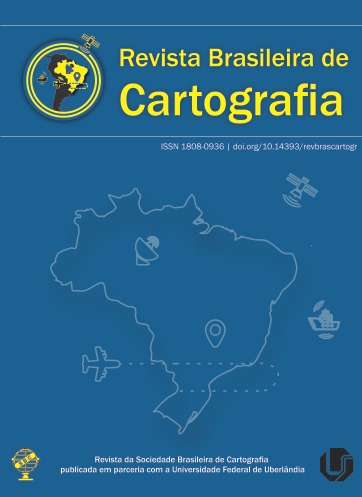Assessment of Environmental Service Provider Areas in the Municipal APA of the Uberaba River, Minas Gerais
Main Article Content
Abstract
The creation of Payments for Ecosystem Services (PSE) Programs is an example of public policy that has been adopted to align the interests of landowners whose lands are located in river basins, which contain water sources used for public supply, and the interests of water companies. This work aims to identify areas that provide environmental services that present erosion control in the Municipal Environmental Protection Area (APA) of the Uberaba River, created to protect the public supply source in the municipality of Uberaba, MG. To do so, the sediment retention module of the software InVEST (Integrated Valuation of Ecosystem Services and Tradeoffs) is used, based on the Universal Soil Loss Equation (USLE) and created a hypothetical scenario, in which the Permanent Preservation Areas (PPAs) located within the EPA were reforested according to Law 12.651/2012. This allowed the comparison between the modeling results from the 2016 scenario with the hypothetical scenario. As a result, it was identified that the micro basins of the municipal EPA of the Uberaba River were classified with the following soil loses, medium (61%), medium-strong (27%), strong (2%), small to null (6%) and moderate (4%). According to the modelling of the InVEST software, the total sediments estimated for the micro basins that compose the municipal APA of the Uberaba River in 2016 was 2,620,062 tons/year and for the future scenario was 1,258,989 tons/year. This result indicates that the recovery of about 6 km² of PPAs can reduce sediment generation by 48%.
Downloads
Metrics
Article Details
Authors who publish in this journal agree to the following terms:
- Authors retain copyright and grant the journal right of first publication with the work simultaneously licensed under a Creative Commons Attribution License that allows others to share the work with an acknowledgment of the work's authorship and initial publication in this journal.
- Authors can enter into separate, additional contractual arrangements for the non-exclusive distribution of the journal's published version of the work (e.g., post it to an institutional repository or publish it in a book), with an acknowledgment of its initial publication in this journal.
- Authors are permitted and encouraged to post their work online (e.g., in institutional repositories or on their website) before and during the submission process, as it can lead to productive exchanges, as well as earlier and greater citation of published work (see "The Effect of Open Access").





